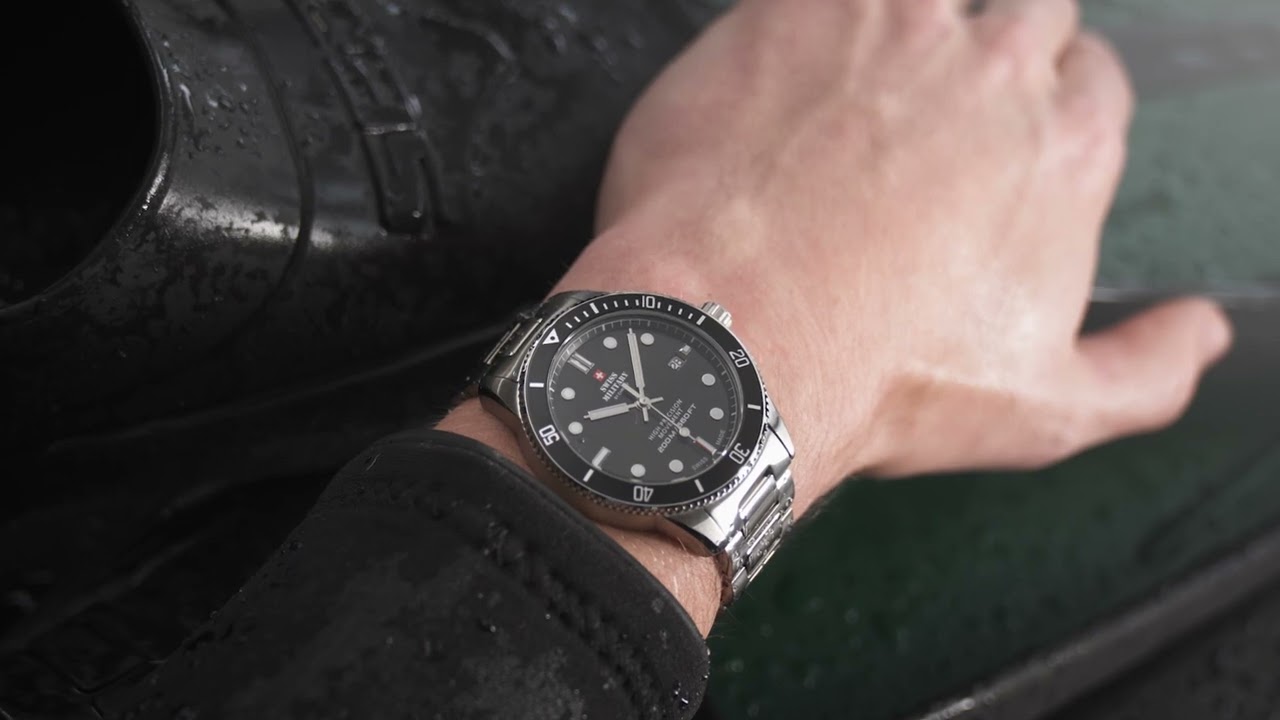Unveiling the Craftsmanship and Precision of Swiss Watches

Watchmaking is a delicate process. To earn the coveted ‘Swiss Made’ designation, a timepiece must be assembled, encased, and inspected in Switzerland.
Swiss watches are known for their luxurious look. This is due to the lavish materials used. You can find them with gold plated cases and even some that are solid gold.
Intricate Craftsmanship
Swiss watches are revered in the world of horology. Their intricate craftsmanship is what sets them apart from their non-Swiss counterparts. They have a long history of excellence that has earned them a reputation for quality and precision. But what exactly goes into making a watch that is considered Swiss? And why do they cost so much?
The answer to the latter question is largely dependent on the brand. Swiss manufacturers like Rolex, Omega, and Patek Philippe are world-renowned for their high-end products. They follow century-old practices and use only the finest materials. They produce their watches by hand and make sure each step is completed thoroughly. As a result, their watches are known to last a lifetime.
Other Swiss watchmakers are a bit more lax in their standards. Some even use the term “Swiss Made” loosely, claiming that their watches meet certain legal standards. However, it is important to note that those standards are not a guarantee of quality. Currently, a watch can be labelled Swiss Made if it is developed in Switzerland, uses a Swiss movement, and passes the Manufacture d’Horlogerie inspection. This is a minimum standard that can easily be abused by lower-end Swiss brands who want to capitalize on the prestige of the term.
Nevertheless, most true Swiss watches will be labeled as such and feature the official “Swiss Made” marking on the face. This mark is typically found on the six o’clock position of the watch. This is easy to spot and can help you determine if a watch is indeed a Swiss made timepiece.
In addition to the official “Swiss Made” designation, many watchmakers also include the name of the manufacturer on their watches. This can be a great way to get a sense of the quality of a specific watch before you buy it. However, this is not a definitive indicator of the quality of a Swiss watch as the names of some companies may be more well-known than others.
In fact, some watches will be labeled as “Swiss Design,” which actually has more to do with Helvetica than horology. In the watch world, this term can mean anything from a sleek, modern design to simply having some parts that are sourced from Switzerland.
Quality Materials
When purchasing a Swiss watch, you’re not only paying for the craftsmanship and precision, but also for the quality materials. All of the parts in a Swiss watch are made from luxurious, high-end materials. You’ll often see gold plated cases, real jewels on the dial (like sapphire and rubies) as well as the use of titanium and other cutting-edge materials in the making of these timepieces. In fact, many luxury watch brands, including Richard Mille, have spent millions of dollars on research and development in order to create new manufacturing techniques and watch movements.
Even the simplest mechanical watches have more than 100 parts, each of which requires a lot of skill and precision to make. To be labeled ‘Swiss made,’ the movement – the heart of any watch – must be assembled, encased, and inspected in Switzerland. This is a very difficult and expensive process that explains why only the best Swiss watches bear this prestigious mark of excellence.
In order to make the ‘Swiss Made’ designation, a watch must also contain at least 60 percent of its total value in Swiss materials. However, there is a lot of gray area in this definition. If you look closely at a watch and see the ‘Swiss made’ label, be sure to examine it thoroughly for other signs that it may not have been made entirely in Switzerland.
For example, if a watch has a leather band, check to see what kind of leather it is. Generally, the highest quality leather is “full grain” leather. This means that the leather retains its top layer, which is more durable and stronger than other kinds of leather. “Top grain” leather, on the other hand, has had the top layer removed and is therefore a bit less durable.
Although some companies may be tempted to cut costs by using non-Swiss materials, most of them respect the strict regulations that govern the use of the ‘Swiss made’ designation. Ultimately, this is for your protection as a consumer and to maintain the integrity of the brand. After all, if people were willing to purchase watches from other countries that were just as accurate and stylish as Swiss made watches, then the ‘Swiss made’ distinction wouldn’t mean much.
Magnificent Attention to Detail
Many people don’t realize that there are strict legal standards that watchmakers must meet in order to have their watches labeled “Swiss made.” It is a mark of distinction that ensures quality and guarantees the Swissness of a watch.
These requirements are set by the Swiss government and have evolved over time to become more rigorous. The standards are designed to protect the reputation of horology as a high art, and uphold the integrity of the phrase “Swiss made.”
A few examples of the meticulous attention to detail that is inherent in the design and production of Swiss watches include:
Jaeger-LeCoultre, founded in Switzerland in 1875, pioneered sapphire crystal watch faces nearly 100 years ago. Sapphire is an extremely hard material that resists chipping and scratching better than softer, cheaper mineral crystal. Since then, the technology has been used by numerous other brands, including the more affordable non-Swiss watches that are still sold today.
Piaget, founded in La Cote-aux-Fees, Switzerland in 1874, is known for its incredibly thin watches, which require an immense amount of precision to engineer and build. The company is also famous for creating the world’s first micro-rotor automatic movements, which allow the watches to be smaller and more precise than ever before.
TITONI, founded in Switzerland in 1996, makes modern, elegant watches with an emphasis on quality and value. The company is renowned for its sleek designs and innovative, high-quality materials, such as titanium. It’s a great choice for anyone who wants to experience the beauty and craftsmanship of a Swiss watch without spending a fortune.
Raymond Weil, founded in Switzerland in 1948, is another enduring and popular Swiss brand. It’s a relatively affordable choice for a Swiss watch, and it’s one of the few that produces its own movements rather than relying on outsourced ones. Its newest release, the Classic Origin Opaline, is an incredible dress watch that’s been called one of the best new releases in recent years.
If you open a Sotheby’s or Christie’s watch catalog, chances are that the majority, if not all, of the watches will be labeled as “Swiss made.” This is because Swiss companies are known for their reputation for excellence and the meticulous craftsmanship that goes into making these beautiful and functional timepieces.
High Cost
As one would expect, the high level of craftsmanship that goes into creating Swiss watches comes with a premium price tag. This doesn’t just apply to the watch itself but also to the materials used to create it. A great example is the use of sapphire crystal as opposed to a more common mineral crystal. Sapphire is a very hard material, rating 9 on the Mohs scale, which makes it extremely durable and scratch resistant. It’s also transparent, meaning that it will show off the intricate detailing on the dial of your watch without needing to be covered with a heavy coating of metal.
It’s these perks that make a Swiss watch an incredibly desirable item and why many people are willing to pay the extra cost to own one. Not to mention the fact that Swiss watches are a great investment and will continue to appreciate in value over time, making them a solid long-term purchase.
While the high cost of Swiss watches might put off some people, there are actually a number of affordable options available. Some of the more well-known Swiss watchmakers offer a wide range of affordable models that can be purchased by just about anyone. Some of these include Patek Philippe, Breguet, Jaeger-LeCoultre, Vacheron Constantin, and Rolex. These brands are known for offering a variety of styles, including dress watches with elegant aesthetics and casual designs that appeal to younger generations.
Swatch is another brand that offers a variety of affordable Swiss watches. Founded during the quartz revolution, Swatch is known for its unique, colorful, and playful designs. In addition to their funky visuals, they also offer a variety of price points, with most pieces falling below $200.
Finally, Mont Blanc is a smaller Swiss watchmaker that offers a wide range of both traditional and modern styles. While this company is not as well-known as some of the other bigger Swiss watchmakers, it still produces a number of beautiful watches that are both affordable and highly reliable. Their recent release of the Defy Classic Carbon, which features a fully carbon fiber case and bracelet, is an excellent example of the cutting edge technology that this brand is capable of producing.



















